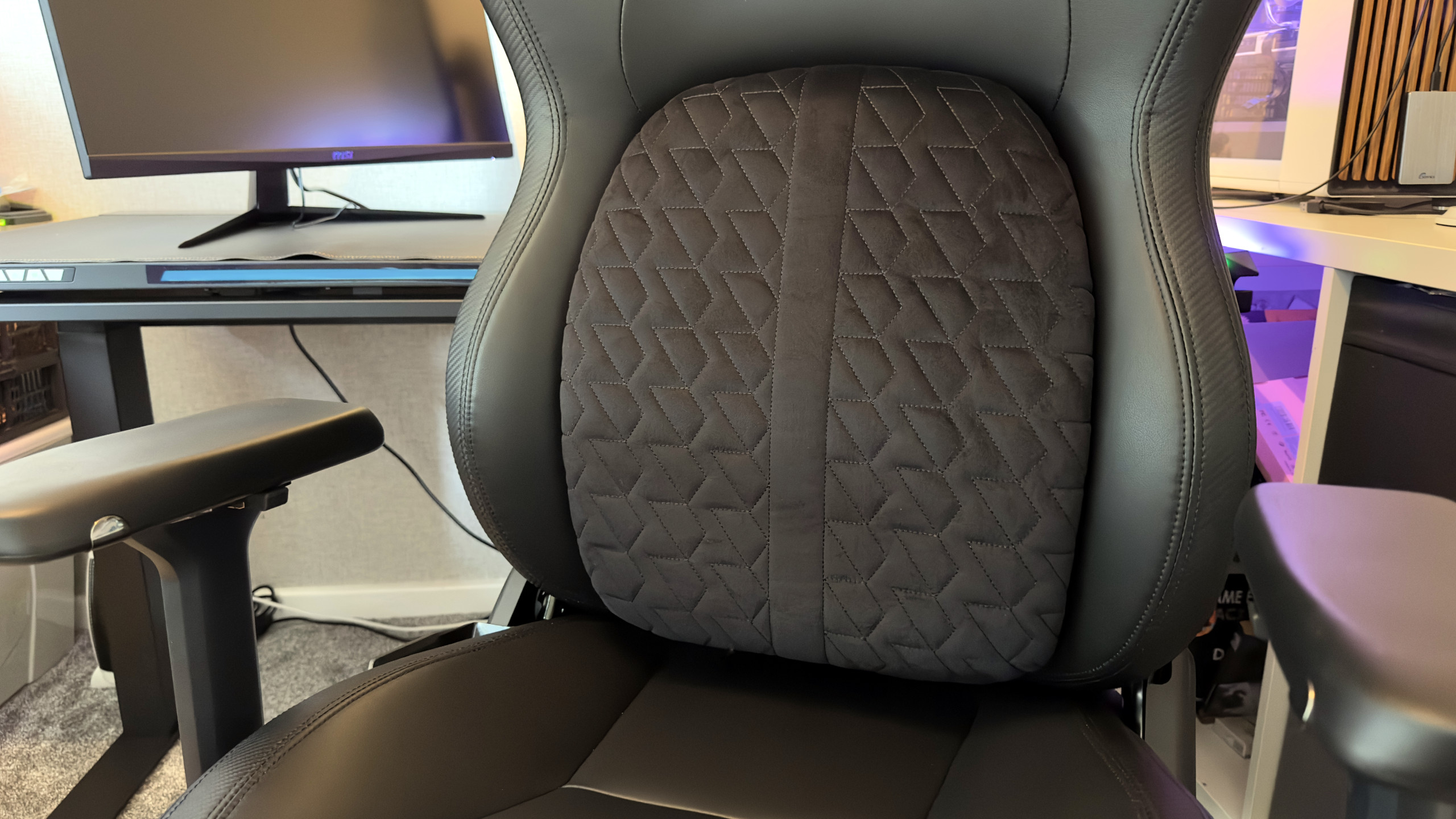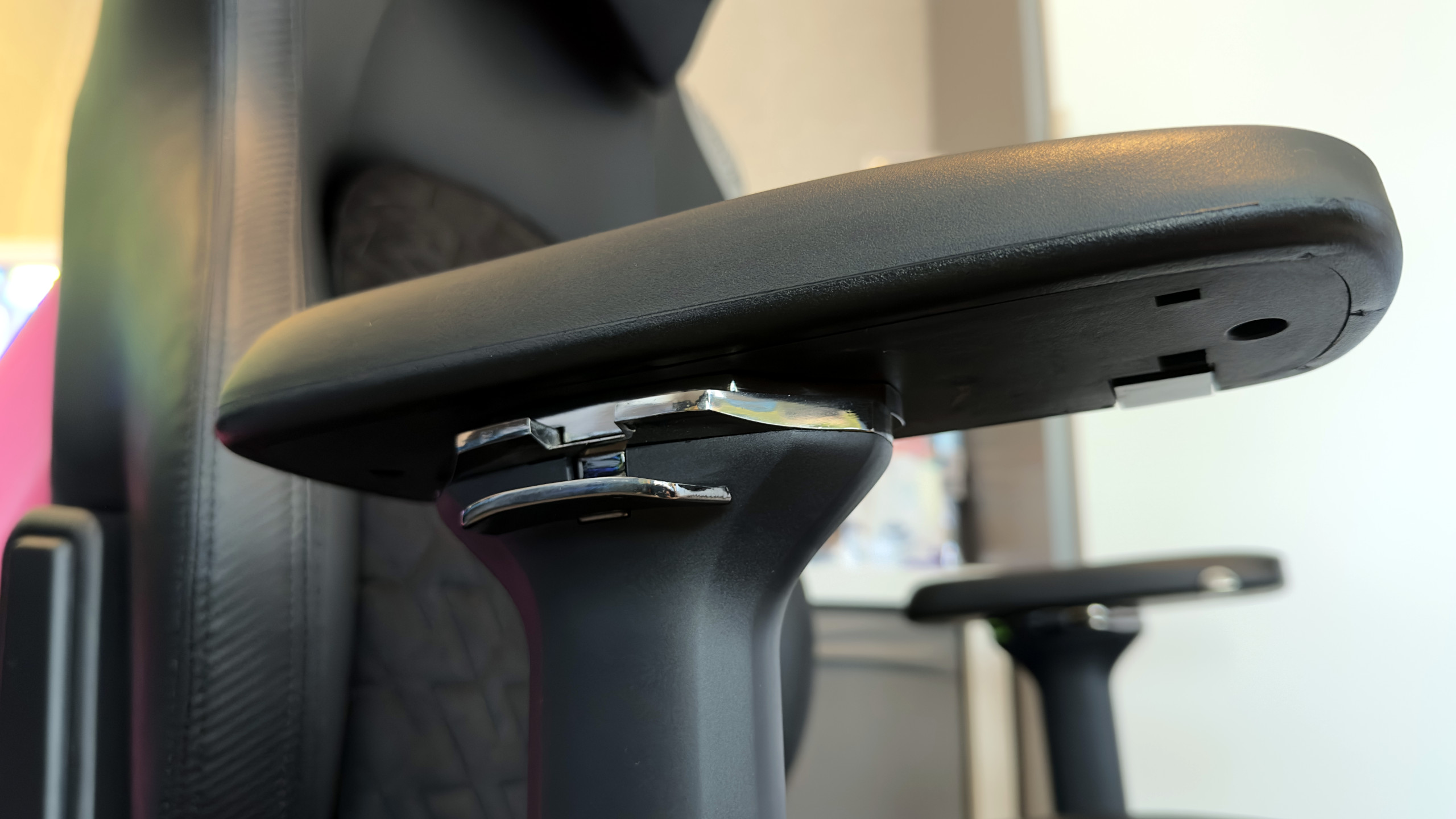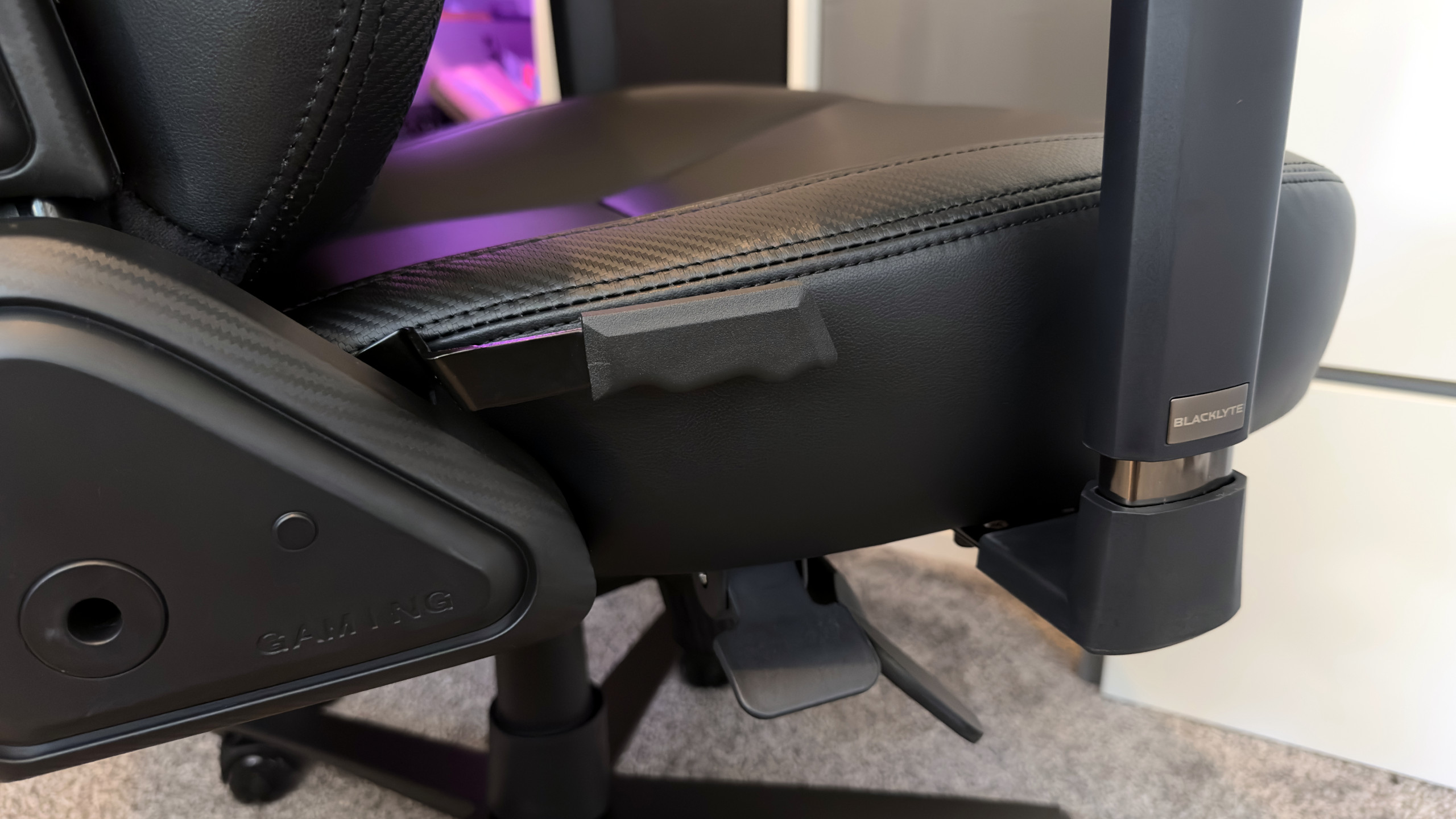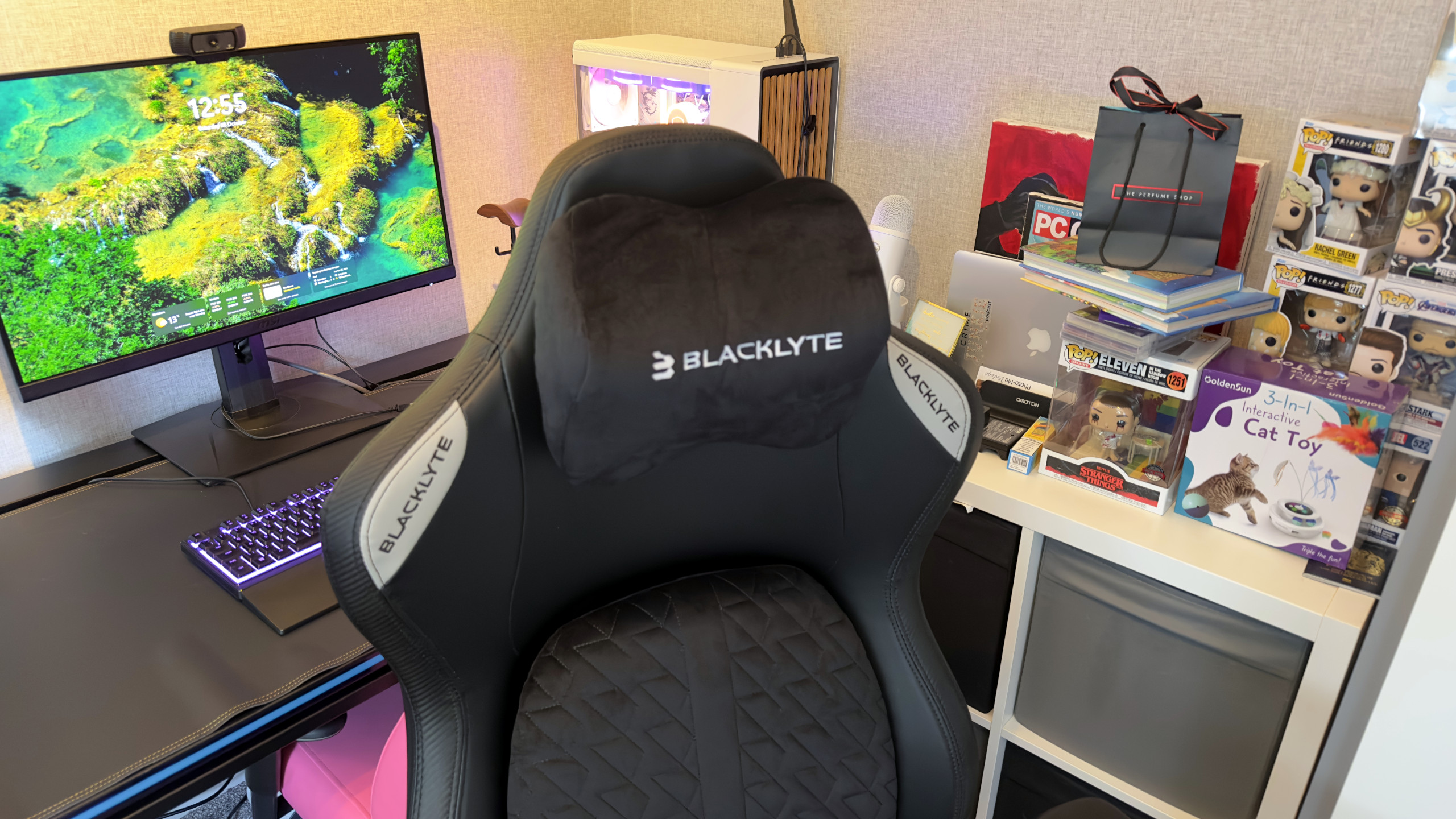Our Verdict
The Blacklyte Kraken is far too expensive for a gaming chair that's uncomfortable, with dubious quality. If you're the right height and shape, it might work for you, but there are far better options out there for the same money.
For
- Dense memory foam seat
- Wide cushion
- Magnetic head pillow
Against
- Too short for tall people
- Lumbar support is unpleasant
- Questionable build quality
PC Gamer's got your back
Recent updates
Update 11 December 2024: This review has been update to correct the location of Blacklyte, which is a Canada-based firm, not a China-based one, as originally stated.
With the gaming chair market being somewhat saturated with plush perches, all looking very similar, it's hard for any company to stand out from the competition. Secretlab achieves this by making its chairs out of quality materials, to a high standard, and at a reasonable price. For the past few weeks, I've been using a Blacklyte Kraken gaming chair to see if the same holds for the Canada-based company.
At first glance, the Kraken gives off a distinct Titan Evo vibe but it's different enough to not be a direct clone. There is clear evidence of some strong influences in the design but the main reason why I'm using Secretlab as a reference is the Kraken's price. Blacklyte wants $519 for its chair, which also just so happens to be the same amount of money as a Titan Evo if one buys it directly from Secretlab.
There's only one size of Kraken available, recommended for people between 165 and 195 cm (66 - 75 inches) in height, and under 150 kg (330 lbs) in weight. I'm 184 cm and 70 kg (read: tall and thin) and I have to say that its dimensions don't fit particularly well for my build.
It's not because the Kraken isn't spacious—the seat base is quite wide and filled with dense memory foam and covered with some nice PU leather (aka leatherette). The problem is that it's quite short and there's quite a large gap between the edge of the base and my knees. Tilting the chair back doesn't help, due to the large 'panel' that fills much of the seat back.
This is the Kraken's lumbar support and it's basically a spring-loaded section that moves forward with the pull of a small lever. Blacklyte claims that it "perfectly match[es] the natural shape of your lower back" but it absolutely doesn't with mine—all it does is push me further along the base, leaving my legs with even less support than it already does. A small pillow stuffed down my back does a far better job.
Speaking of pillows, the Kraken comes with one for your head/neck that magnetically attaches to the headrest and it's really quite nice. I'd prefer it to be larger than it is, though, because even with the seat back fully upright, it doesn't quite reach my head or neck enough.
It's a similar story with the armrests. They're fine for the most part but the amount of positioning available is a bit restrictive. I'd prefer it if they could go a little lower and more forward than they do. They're topped by a magnetically attached pad that's a little too firm for my tastes but where Secretlab offers alternate pads to apply to the Titan Evo, Blacklyte has nothing (so why are they removable?).

The armrests are four-way adjustable (three-axis movement and rotation) but it's a rather clunky affair, with quite a lot of play in the fixtures. In fact, there's a lot of play in the whole chair and loosening the tilt mechanism, to allow one to rock back further, induces some rather worrying-sounding clunks.

It might just be the specific sample I was sent, but the build quality was poor. The chair's height adjustment mechanism stopped working within a week and from the very start, the two levers controlling it had such a degree of slop to their fitting, I thought I'd broken them during assembly. The mechanism to adjust the lumbar support is also starting to fail, with the cable sticking in its sheath.
✅ You don't want to conform with the crowd: Should the thought of being seen with a Secretlab or Corsair gaming chair put you off, Blacklyte is at least a name that should make you stand out.
❌ You want a quality chair for a reasonable price: The Blacklyte Kraken costs double what it should do, given the relative lack of features and quality control.
Unlike Blacklyte's Atlas gaming desk, which was very straightforward to build, the Kraken was a fiddly affair, involving much juggling of heavy parts whilst trying to line up bolts with holes, many of which were partly hidden by material. At least all the fittings came in a labelled package, so judging which piece to use during the assembly process was easy enough.
I was disappointed to see that the Kraken is shipped with a lot of packaging material that's non-recyclable. Some of that can't be avoided, given how far the chair needs to travel in distribution, but in this day and age, having every component wrapped up in some kind of soft plastic isn't environmentally friendly.
But I could forgive all of this if the Blacklyte Kraken was comfortable to use for lengthy periods. In my case, that means spending a day at a desk working and then a few hours in the night gaming.
Unfortunately, it's not and I have to say it's one of the least comfortable gaming chairs I've ever used. Now, a good part of that is because it just doesn't suit my body's dimensions and shape, but I've asked a few people to try it out and none of them found it nice to use.

As with all gaming chairs with a thick memory foam base, it takes a while for it to bed in, and my scant weight is probably delaying that process. But the unpleasant lumbar support, short seat base length, and overly high armrests all contribute to the general lack of comfort.
Now, if the Kraken only cost $250, like the Corsair TC100 Relaxed does, then I'd happily forgive its failings. But what's acceptable at a few hundred dollars is absolutely not at $500, even accounting for my atypical body dimensions. You might fit the Blacklyte Kraken better than I did, nor suffer any of the quality control issues, but are you willing to take the risk? For this kind of money, I suspect the answer is no.
The Blacklyte Kraken is far too expensive for a gaming chair that's uncomfortable, with dubious quality. If you're the right height and shape, it might work for you, but there are far better options out there for the same money.

Nick, gaming, and computers all first met in 1981, with the love affair starting on a Sinclair ZX81 in kit form and a book on ZX Basic. He ended up becoming a physics and IT teacher, but by the late 1990s decided it was time to cut his teeth writing for a long defunct UK tech site. He went on to do the same at Madonion, helping to write the help files for 3DMark and PCMark. After a short stint working at Beyond3D.com, Nick joined Futuremark (MadOnion rebranded) full-time, as editor-in-chief for its gaming and hardware section, YouGamers. After the site shutdown, he became an engineering and computing lecturer for many years, but missed the writing bug. Cue four years at TechSpot.com and over 100 long articles on anything and everything. He freely admits to being far too obsessed with GPUs and open world grindy RPGs, but who isn't these days?



